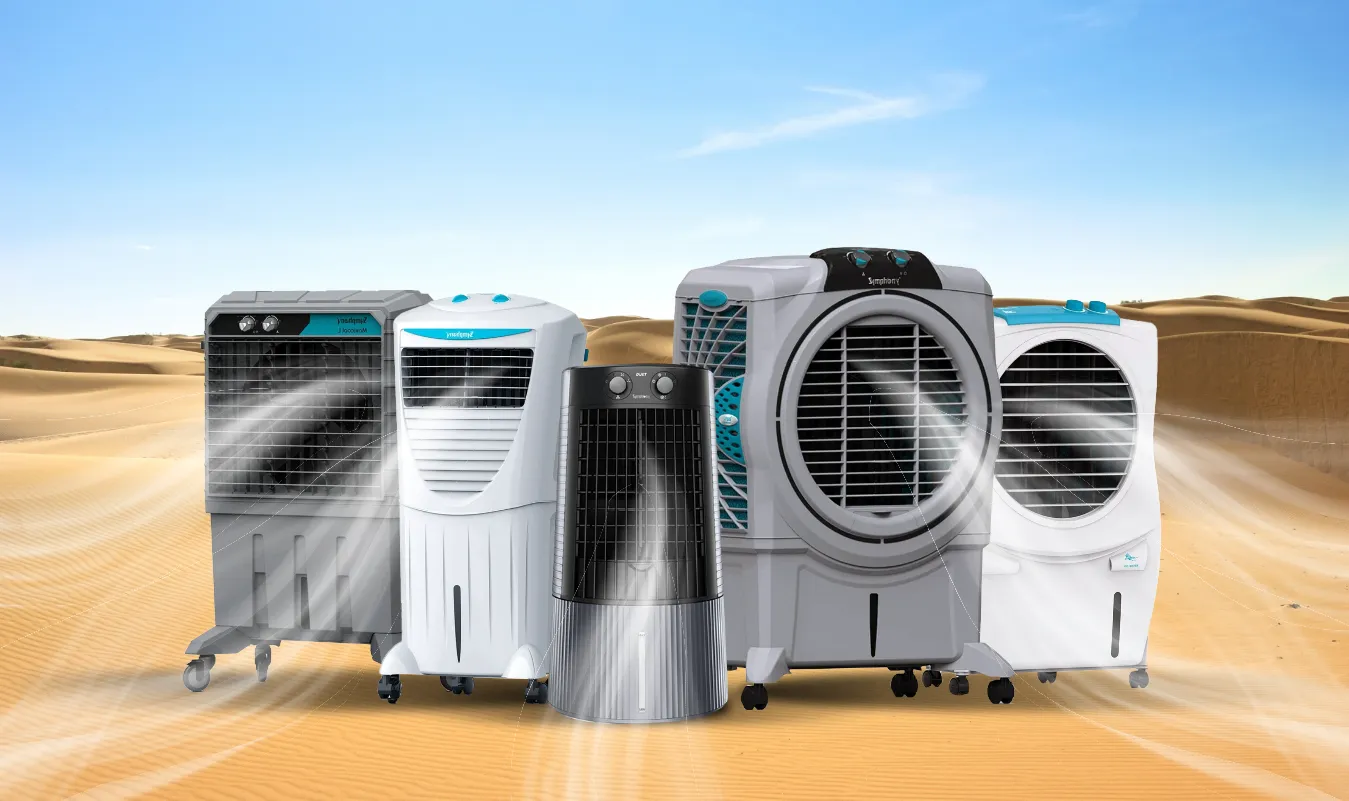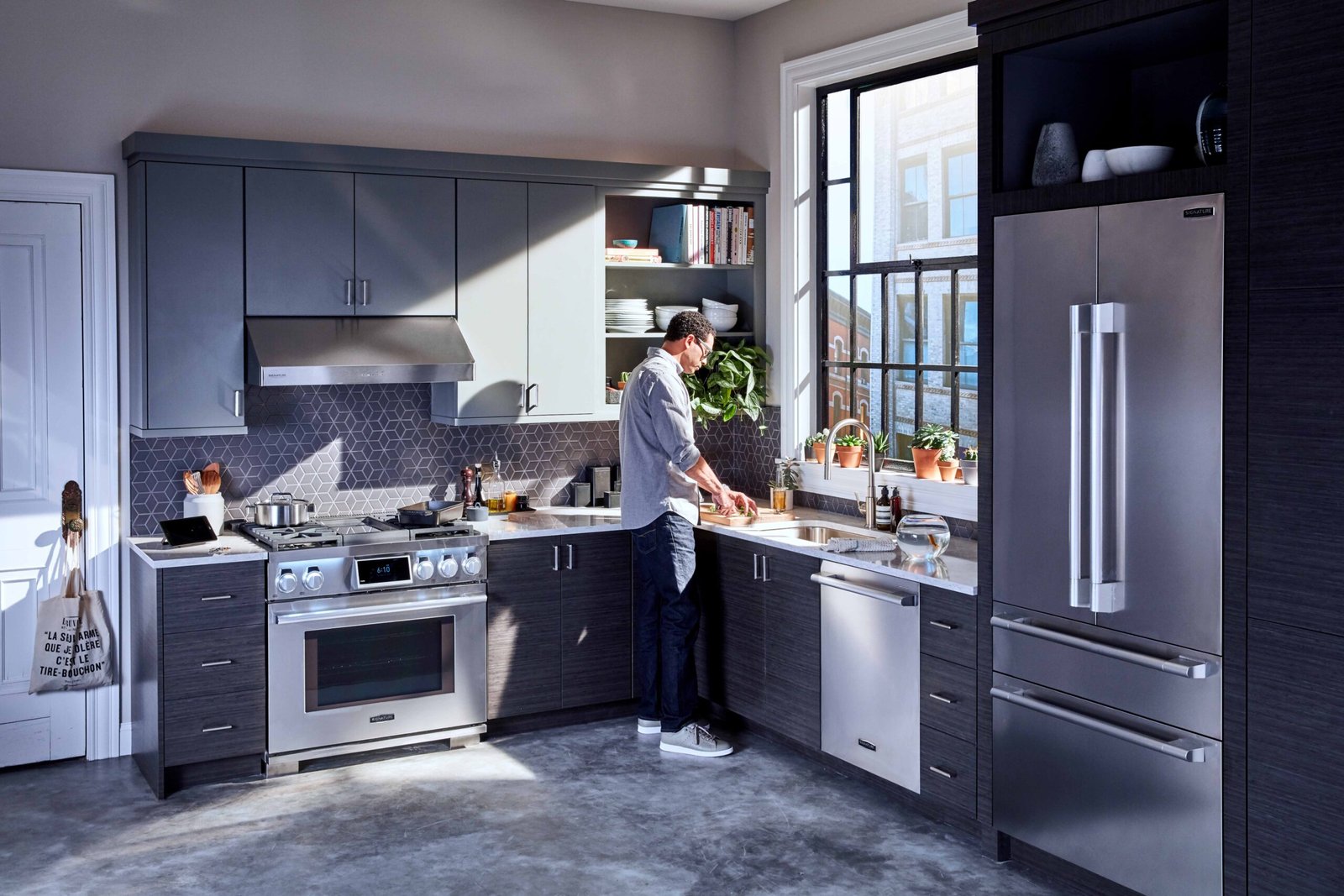Kitchen Appliance : Safety Guide 10 Rules for Smart Use

Kitchen appliance safety represents a critical concern for every household. We spend countless hours in our kitchens, surrounded by appliances that make cooking easier but can cause serious injuries when used incorrectly. Every year, thousands of people visit emergency rooms due to preventable kitchen appliance accidents.
Understanding proper appliance safety tips protects your family and prevents costly accidents. We’ll share ten crucial kitchen safety rules that every home cook should follow.
Kitchen Appliance Safety Rule
1. Read and Follow Manufacturer Instructions
Every kitchen appliance comes with specific safety guidelines that manufacturers develop through extensive testing and real-world use data. These appliance safety instructions aren’t suggestions, they’re critical safety requirements that prevent kitchen accidents and ensure proper operation.
Why Instructions Matter
Manufacturer guidelines address several key safety areas:
- Electrical requirements – voltage, amperage, and outlet specifications
- Installation procedures – proper placement, ventilation, and connections
- Operating limits – maximum capacity, temperature ranges, and time restrictions
- Maintenance schedules – cleaning procedures and component replacement intervals
Common Kitchen Appliance Safety Violations
Kitchen safety experts identify frequent mistakes that lead to appliance accidents:
- Overloading electrical circuits – using multiple high-wattage kitchen appliances on single outlets
- Ignoring capacity limits – overfilling blenders, food processors, and mixing bowls
- Skipping safety features – bypassing guards, covers, and automatic shutoffs
- Improper cleaning methods – using wrong products or submerging electrical components
2. Inspect Kitchen Appliances Before Each Use
Regular kitchen appliance inspection catches problems before they cause accidents. Damaged appliances pose serious risks including electrical shock, kitchen fires, and mechanical injury.
Key Inspection Points
Check these areas every time you use an appliance:
- Power cords and plugs – look for fraying, cuts, or exposed wires
- Housing and casings – inspect for cracks, loose parts, or damage
- Safety features – verify guards, covers, and switches work properly
- Cleanliness – ensure no buildup of grease, food particles, or debris
Kitchen Appliance Warning Signs That Require Immediate Attention
Stop using kitchen appliances immediately if you notice:
- Electrical safety issues – sparks, flickering lights, or burning smells
- Mechanical problems – unusual noises, vibrations, or resistance
- Heat abnormalities – excessive heat from handles, cords, or surfaces
- Performance changes – reduced power, intermittent operation, or complete failure
| Kitchen Appliance Type | Most Common Failure | Warning Signs | Replacement Timeline |
| Blenders | Motor burnout | Loud grinding, smoke | 5-7 years |
| Toasters | Heating element failure | Uneven toasting, sparks | 6-8 years |
| Microwaves | Door seal damage | Steam leaks, arcing | 8-10 years |
| Coffee Makers | Water system clogs | Slow brewing, mineral buildup | 4-6 years |
| Food Processors | Blade wear | Poor cutting, excessive vibration | 7-10 years |
3. Keep Electrical Components Away From Water
Water and electricity create deadly combinations. Kitchen safety requires extra attention to electrical safety due to environments with sinks, steam, and spills that create kitchen hazards.
Kitchen Electrical Safety Protocols
Follow these kitchen safety guidelines to prevent electrical hazards:
- Dry hands completely before touching electrical kitchen appliances or controls
- Keep appliances away from sinks – maintain minimum 3-foot distance when possible
- Unplug during cleaning – never clean electrical components while connected
- Address spills immediately – clean up liquid spills before they reach electrical areas
GFCI Protection Requirements for Kitchen Safety
Ground Fault Circuit Interrupters (GFCI) protect against electrical shock in wet kitchen environments. Building codes require GFCI outlets within 6 feet of kitchen sinks, but many older homes lack proper protection.
4. Use Proper Ventilation and Heat Management
Heat-generating kitchen appliances require adequate ventilation to prevent overheating, reduce kitchen fire risk, and maintain air quality. Poor ventilation causes appliance failures and creates dangerous kitchen conditions.
Ventilation Requirements
Different appliances need specific ventilation considerations:
- Ovens and ranges – require range hoods or exhaust fans rated for BTU output
- Toasters and toaster ovens – need clear space above and around heating elements
- Coffee makers – require ventilation to prevent steam buildup and condensation
- Slow cookers – need space for steam venting and heat dissipation
Heat Safety Measures
Protect against burns and fire with these precautions:
- Use heat-resistant surfaces – trivets, cutting boards, and heat pads
- Maintain clearance spaces – follow manufacturer specifications for surrounding areas
- Monitor temperatures – use thermometers and timers to prevent overheating
- Have fire extinguishers ready – Class K extinguishers designed for kitchen fires
5. Handle Sharp Components With Extreme Care
Kitchen appliances often contain sharp blades, edges, and cutting surfaces that cause serious injuries when handled improperly. Kitchen blade safety and proper handling of sharp kitchen tools prevent thousands of emergency room visits annually.
Safe Blade Handling Techniques
Always follow these procedures when working with sharp components:
- Unplug before cleaning – never clean blades while appliances are connected to power
- Use proper tools – employ cleaning brushes, not bare hands, to clean sharp edges
- Store safely – keep blade attachments in protective covers or designated storage areas
- Replace when dull – sharp blades are actually safer than dull ones that require more pressure
Specific Appliance Precautions
Food Processors and Blenders:
- Remove blades before cleaning containers
- Handle blades by their plastic centers, not metal edges
- Check that lids and safety locks engage properly before operation
Mandoline Slicers and Graters:
- Always use hand guards and pusher tools
- Store with blade guards in place
- Clean with brushes, never bare fingers
Can Openers:
- Check for sharp edges on opened cans
- Clean cutting wheels carefully with brushes
- Replace when cutting becomes difficult or uneven
Safety also depends on the appliances you choose. AtJalal Electronics, we provide certified, durable Home appliances designed to low risks in your kitchen.

6. Maintain Proper Loading and Capacity Limits
Overloading kitchen appliances causes mechanical stress, reduces performance, and creates kitchen safety hazards. Each kitchen appliance has specific capacity limits based on motor power, structural design, and safety testing.
Understanding Capacity Guidelines
Manufacturers test appliances under various load conditions to determine safe operating limits:
- Volume limits – maximum liquid or food quantities
- Weight restrictions – total load capacity for mixing and processing
- Time limitations – maximum continuous operation periods
- Temperature ranges – safe operating temperature boundaries
Consequences of Overloading
Exceeding capacity limits leads to several problems:
- Motor burnout – excessive load damages electrical components
- Mechanical failure – stress fractures in housings and structural components
- Safety hazard creation – overheating, spillage, and loss of control
- Warranty voidance – manufacturers don’t cover damage from misuse
Engineering Data: Appliance testing laboratories report that operating at 80% of maximum capacity extends appliance life by 40% while maintaining optimal performance and safety margins.
7. Keep Children and Pets Away From Operating Kitchen Appliances
Children and pets don’t understand kitchen appliance dangers and can cause accidents through curiosity or unexpected behavior. Creating safe boundaries protects both family members and prevents kitchen appliance damage.
Child Safety Measures for Kitchen Appliances
Implement these kitchen safety precautions when children are present:
- Supervise constantly – never leave children alone with operating kitchen appliances
- Teach kitchen safety rules – explain dangers and proper behavior around kitchen equipment
- Use safety locks – install appliance locks on ovens, dishwashers, and other accessible units
- Create safe zones – designate areas where children can help without accessing dangerous equipment
Pet Safety Considerations
Pets present unique challenges in kitchen environments:
- Secure loose cords – prevent chewing and tripping hazards
- Block access to heat sources – keep pets away from ovens, stovetops, and hot appliances
- Store small appliances – prevent pets from knocking over blenders, processors, and similar devices
- Clean up spills immediately – prevent pets from consuming harmful substances or creating slip hazards
8. Use GFCI Outlets and Proper Electrical Practices
Kitchen electrical safety requires special attention due to the presence of water, steam, and multiple high-power kitchen appliances. Modern electrical codes mandate specific safety features for kitchen installations.
GFCI Requirements and Benefits
Ground Fault Circuit Interrupters monitor electrical flow and shut off power when they detect dangerous conditions:
- Detection capability – identifies ground faults as small as 4-6 milliamps
- Response time – shuts off power within 1/40th of a second
- Reset functionality – allows restoration of power after fault correction
- Testing requirements – monthly testing ensures proper operation
Electrical Load Management
Prevent circuit overloading by understanding appliance power requirements:
- Calculate total load – add up wattage of all appliances on each circuit
- Distribute high-power items – avoid running multiple heating appliances simultaneously
- Use dedicated circuits – major appliances like microwaves need their own circuits
- Monitor for warning signs – dimming lights, warm outlets, or tripping breakers indicate problems
9. Regular Maintenance and Cleaning Schedules
Preventive kitchen appliance maintenance keeps appliances operating safely and extends their useful life. Regular cleaning prevents buildup of grease, food particles, and minerals that cause performance problems and kitchen safety hazards.
Daily Maintenance Tasks
Perform these tasks after each use:
- Wipe down surfaces – remove spills, splatters, and residue immediately
- Clean removable parts – wash blades, containers, and accessories thoroughly
- Check for damage – inspect for wear, cracks, or other problems
- Secure cords and attachments – store properly to prevent damage
Weekly Deep Cleaning
More thorough cleaning prevents serious problems:
- Descale water-using appliances – remove mineral buildup from coffee makers, steamers, and similar devices
- Clean filters and vents – ensure proper airflow and filtration
- Lubricate moving parts – follow manufacturer recommendations for mechanical components
- Test safety features – verify that guards, switches, and locks operate correctly
Monthly Professional-Level Maintenance
These tasks require more time but prevent major problems:
- Deep clean heating elements – remove grease and food buildup from ovens, toasters, and grills
- Inspect electrical connections – check plugs, cords, and internal wiring for wear
- Calibrate temperature controls – verify accurate temperature readings and control
- Replace consumable components – filters, gaskets, and other wear items
| Maintenance Task | Frequency | Time Required | Safety Impact |
| Surface cleaning | Daily | 2-3 minutes | Prevents contamination |
| Parts washing | After each use | 5-10 minutes | Removes bacteria, prevents clogs |
| Filter replacement | Monthly | 10-15 minutes | Maintains performance, air quality |
| Professional service | Annually | 1-2 hours | Prevents major failures |
10. Know Emergency Procedures and Have Kitchen Safety Equipment Ready
Despite following all kitchen appliance safety rules, emergencies can still occur. Being prepared with proper kitchen safety equipment and knowledge can prevent minor incidents from becoming major disasters.
Essential Kitchen Safety Equipment
Every kitchen should have these emergency items readily available:
- Class K fire extinguisher – specifically designed for kitchen grease fires
- First aid kit – stocked with burn gel, bandages, and antiseptic supplies
- Emergency contact list – phone numbers for utilities, emergency services, and poison control
- Flashlight and batteries – for power outage situations
Kitchen Emergency Response Procedures
Electrical Fires:
- Never use water on electrical fires
- Unplug the appliance if safely possible
- Use Class C fire extinguisher or baking soda for small fires
- Call fire department for any fire that spreads beyond the appliance
Electrical Shock:
- Turn off power at the circuit breaker
- Do not touch the victim while they’re in contact with electricity
- Call emergency services immediately
- Begin CPR if necessary and you’re trained
Burns and Cuts:
- Cool burns with running water for 10-15 minutes
- Apply pressure to cuts with clean cloth
- Seek medical attention for serious injuries
- Keep burn gel and sterile bandages easily accessible
Appliance Malfunction:
- Unplug the device immediately
- Clear the area of people and pets
- Document the problem for warranty or insurance claims
- Contact manufacturer or qualified repair service
Frequently Asked Questions
How often should I replace kitchen appliances for safety reasons?
Most small kitchen appliances last 5-10 years with proper care. Replace immediately if you notice electrical problems, mechanical failures, or safety feature malfunctions, regardless of age.
Are older kitchen appliances less safe than newer models?
Older kitchen appliances may lack modern kitchen safety features like GFCI protection, automatic shutoffs, and improved insulation. However, well-maintained older appliances can be safe if they pass inspection.
What’s the most important kitchen safety feature to look for when buying new appliances?
GFCI protection, automatic shutoff capabilities, and UL (Underwriters Laboratories) certification are the most critical kitchen safety features for any kitchen appliance.
How can I tell if a kitchen electrical outlet is safe for my appliance?
Check that the outlet provides the correct voltage, has GFCI protection near water sources, and isn’t overloaded with other kitchen appliances. Consult an electrician if you’re unsure about kitchen electrical safety.
What should I do if my kitchen appliance starts sparking?
Unplug it immediately if you can do so safely. If you cannot reach the plug safely, turn off power at the circuit breaker. Do not use the kitchen appliance again until it’s professionally inspected.
How do I safely clean kitchen appliances with electrical components?
Always unplug kitchen electrical appliances before cleaning. Use damp (not wet) cloths for surfaces and never submerge electrical components in water unless specifically designed for it.
Are extension cords safe for kitchen appliances?
Generally no. Most kitchen appliances draw high current and should plug directly into wall outlets for kitchen safety. If you must use an extension cord, ensure it’s rated for the appliance’s power requirements.
Creating a Culture of Kitchen Appliance Safety
Kitchen appliance safety isn’t just about following rules – it’s about developing kitchen safety habits that protect your family and property. Start by implementing these ten kitchen appliance safety rules gradually, focusing on the areas where you’ve been less careful in the past.
Remember the key kitchen safety principles:
- Always read and follow manufacturer instructions completely
- Inspect kitchen appliances before each use and address problems immediately
- Keep electrical components away from water and ensure proper GFCI protection
- Maintain adequate ventilation and heat management practices
- Handle sharp components with extreme care and proper tools
Maintain your kitchen appliances properly:
- Follow regular cleaning and maintenance schedules
- Respect capacity limits and loading guidelines
- Create safe boundaries for children and pets
- Keep kitchen emergency equipment ready and know how to respond to problems







